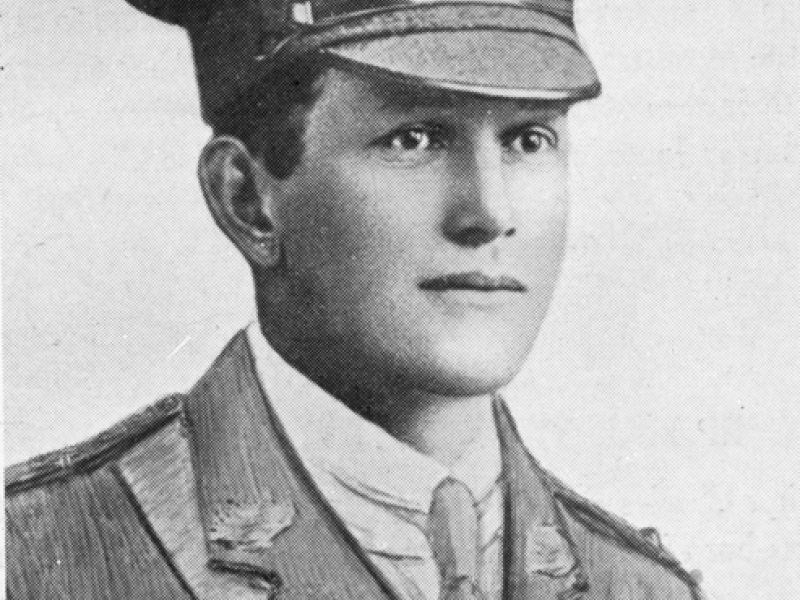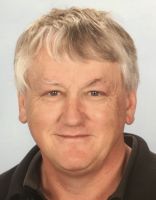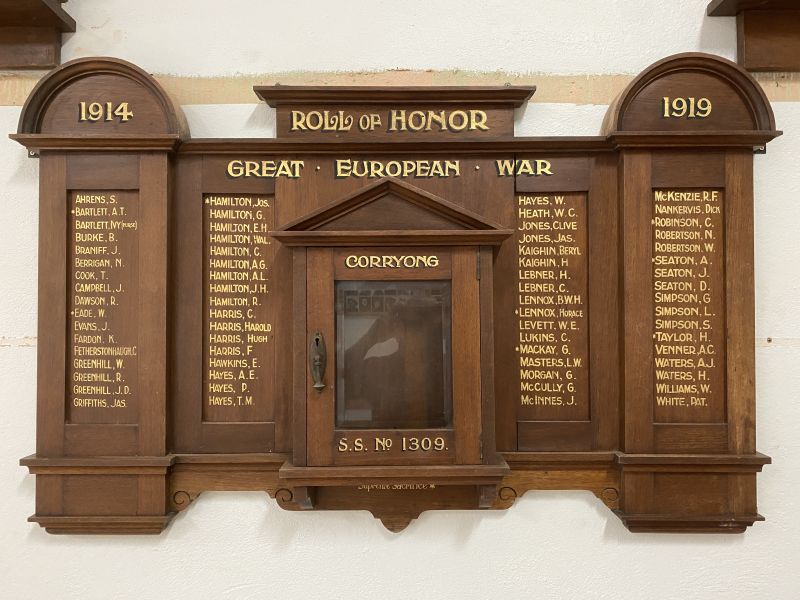Stanley Claude Robinson
Stanley Robinson was such an effective teacher, that the AIF wanted him to remain in Australia to instruct new recruits at the training camp at Broadmeadows, just on the outskirts of Melbourne. For nearly two years, Stanley tolerated this, rising in rank from private to 2nd Lieutenant. Finally, he took the only path that would allow him to pursue his journey to the front - he resigned his commission and became a private once again.
Stanley Claude Horatio Robinson was born in Corryong, Victoria, on 28 October 1892 to William Horatio Robinson and Mary (nee Cameron) Robinson. Stanley’s father was a contractor in the Upper Murray. He would have at least two siblings, Cora Emily, born in 1894, and Percival William, born in 1903.
After completing his elementary education, he attended Wangaratta High school in 1909 and 1910. In 1911 he was appointed junior teacher at School 1365, Tallangatta. In 1912 he was transferred, in a similar capacity, to School 1309, Corryong. In 1914 he was made head teacher of part-time schools at Colac Colac and Upper Towong, and, on 30 August 1915, he enlisted. Department of Education records show that he took a good interest in his schools, and bought his “pupils on well”. He was a good organiser.
Stanley enlisted on 13 August 1915. His medical examination was carried out by Dr. Greenham in Corryong. His description shows a young man in his early 20’s with a height of 5 feet 6 inches (168 cm) and a weight of 10 stone 10 pounds (70 kg). He had a ruddy complexion, with light brown eyes and hair. His enlistment number, 6877, would eventually include the letter A to become 6877A. This was due to him working his way through the ranks to become an officer and then reverting back to a Private.
Within a few months, he would be promoted to Corporal in the 4th Depot Battalion. A series of promotions and demotions from Sergeant, back to Private, and up again to Sergeant would take place within a six-month period. The demotions occurred as he was transferred from one unit to another, with the unit he was being transferred into having their quota of NCOs (non-commissioned officers such as Corporals and Sergeants). During this time he would serve with the 37th Battalion at Seymour, the 10th Depot Battalion at Ascot Vale, the 23rd Battalion at Royal Park, and finally the 13/48th Reinforcements at Broadmeadows. On 1 June 1916, he was appointed 2nd Lieutenant, retaining this rank until he transferred to the 1st Depot Battalion at Broadmeadows where he became an acting sergeant.
He finally embarked on HMAT A71 Nestor at Port Melbourne on 21 November 1917 as part of the 20th Reinforcements for the 24th Battalion. Almost one month later, on 15 December 1917, his unit disembarked at Suez. After a period of training in Egypt, he once again embarked on the Nestor at Alexandria for the short trip across the Mediterranean. Stanley eventually disembarked at Southampton, England on 24 January 1918.
Training of Australian soldiers in England often took place around the Salisbury Plains in Wiltshire and it was here, at the village of Forant, that Stanley and his mates marched into the 6th Training Battalion, 2nd Training Brigade, on 11 February 1918, the same day that he was promoted to acting Lance Corporal. The type of training that Stanley undertook can best be explained by a section of the 2nd Training Brigade:
“A Platoon of the 6th Training Bn. and one of the 9th T.B. carry out an open warfare attack, blank ammunition being used. The Platoons worked separately, and carried out separate schemes.
An advance was made over open country by sectional rushes, under covering fire from Lewis Gun and remaining rifle sections.
On the objective being captured, rifles were immediately cleaned and work of consolidating commenced. While this was in progress, a hostile gas bombardment took place (smoke bombs). Small box respirators were at once adjusted, and work carried out under the protection of an advanced line of riflemen and the Lewis Gun section.”
On 22 April, Stanley once again reverted to the rank of Private and moved out along with the 5th Training Battalion for embarkation to France. This Battalion finally arrived in France on 22 May 1918 and Stanley, along with the other reinforcements was taken on strength with the 24th Battalion of the 6th Brigade on 1 June 1918.
Stanley’s time with the 24th Battalion was to be short-lived. The Battalion’s War Diary for 11 June 1918 states; “a very lively day. Our artillery and trench mortars very active and we received a lot of shells in reply, the whole front being shelled.” It was during this counter-battery fire from the Germans that Stanley received shrapnel wounds to his head and right elbow. Stanley was admitted to the 5th Australian Field Ambulance and then transferred to the 20th Casualty Clearing Station where he succumbed to his wounds on 12 June 1918 at 8:45 pm. He was buried at the Vignacourt Military Cemetery, France with the Rev. T. T. Causten officiating.
Nearly one month later, Stanley’s parents, William and Mary would receive a small brown package that contained the following: 1 cigarette holder, 1 disc and strap, 1 photo case, 1 wallet, 1 badge, photos, and 1 certificate. These small mementos were all that they had of Stanley’s personal belongings. It seems strange that Stanley had spent almost two years in the army in Australia, training recruits, and yet, after finally reaching the front, would have less than two weeks left of his life.
The Corryong Courier on 20 June 1918, referring to Stanley’s death, says:
“The heartfelt sympathy of the district goes out to the bereaved family in the loss of a promising son. His ability as a teacher, and his ever-ready tact, cheery disposition, and responsiveness among men soon won him promotion in the Broadmeadows Camp. He was not long in securing his lieutenancy, and his worth as an instructor was soon recognized, with the result that the authorities would not let him leave Victoria. This he endured with some impatience for upwards of two years, but ultimately, he resigned his commission and embarked as a private, going with the same contingent as Dr Greenham, Alf Venner, and others. Claude’s wish was to get to the front. He got his wish, and has died a hero’s death.”
Stanley is remembered at the Australian War Memorial Roll of Honour, and the Corryong War Memorial. For his service during the First World War, Stanley was awarded the British War medal and the Victory Medal.

 Stephen Learmonth
Stephen Learmonth